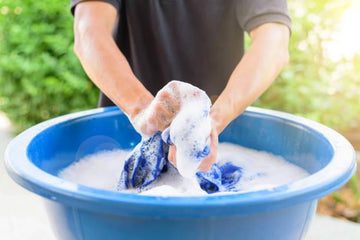The Evolution of Rash Guards: From Functionality to Sustainability
The evolution of rash guards has been nothing short of remarkable. Initially designed for functionality, these garments have now embraced sustainability, transforming the sportswear industry. The shift towards eco-friendly sportswear is driven by a growing awareness of environmental benefits and the need for sustainable sports gear.
Rash guards, once solely focused on protecting athletes from abrasions and UV rays, are now crafted with sustainable sports materials. This change not only enhances performance but also reduces the environmental impact. The introduction of green rash guards signifies a commitment to eco-conscious sportswear, reflecting a broader trend towards sustainable athletic wear.
As the demand for eco-friendly rash guards increases, manufacturers are exploring innovative materials and production methods. This evolution highlights the importance of sustainable rash guard materials in reducing carbon footprints and promoting a healthier planet. The journey from functionality to sustainability in rash guards is a testament to the industry's dedication to environmental stewardship and the future of sportswear.
Understanding Sustainable Materials: What Makes a Rash Guard Eco-Friendly?
When it comes to sustainable rash guards, the materials used play a crucial role in their eco-friendliness. Traditional rash guards often rely on synthetic fabrics that are not biodegradable and contribute to environmental pollution. In contrast, sustainable rash guards are crafted from eco-friendly sportswear materials that minimize environmental impact.
One of the key sustainable sports materials is recycled polyester. This material is derived from post-consumer plastic bottles, reducing waste and conserving resources. By transforming waste into high-performance fabric, recycled polyester helps in creating eco-conscious sportswear that is both durable and sustainable.
Another innovative material is organic cotton. Unlike conventional cotton, organic cotton is grown without harmful pesticides and synthetic fertilizers. This makes it a greener option for sustainable athletic wear. Organic cotton rash guards are not only soft and comfortable but also promote healthier ecosystems.
Bamboo fabric is also gaining popularity in the realm of sustainable sports gear. Bamboo grows rapidly and requires minimal water, making it an excellent renewable resource. Bamboo-based rash guards are breathable, moisture-wicking, and naturally antibacterial, offering a perfect blend of performance and sustainability.
Lastly, there are biodegradable fibers like Tencel, made from sustainably sourced wood pulp. Tencel is known for its softness, strength, and eco-friendly production process. Rash guards made from Tencel are gentle on the skin and the planet, embodying the essence of green rash guards.
Understanding these sustainable materials is essential for appreciating the environmental benefits they bring. By choosing eco-friendly rash guards, athletes can enjoy high-performance gear while supporting a healthier planet.
Environmental Benefits of Sustainable Rash Guard Materials
The shift towards sustainable rash guard materials is not just a trend; it's a necessity for our planet. Eco-friendly sportswear, including green rash guards, plays a crucial role in reducing environmental impact. By choosing sustainable sports gear, athletes and enthusiasts contribute to a healthier ecosystem.
One of the primary environmental benefits of sustainable rash guard materials is the reduction in carbon footprint. Traditional sportswear production often involves processes that emit significant greenhouse gases. In contrast, eco-conscious sportswear utilizes sustainable sports materials that require less energy and produce fewer emissions. This shift helps combat climate change and promotes a greener future.
Moreover, sustainable athletic wear often incorporates recycled or organic materials. These eco-friendly rash guards minimize waste and reduce the demand for virgin resources. By repurposing materials, the sportswear industry can significantly decrease its environmental footprint. This approach not only conserves natural resources but also reduces pollution and landfill waste.
Another significant advantage of sustainable rash guard materials is their potential for biodegradability. Unlike conventional synthetic fabrics, which can take hundreds of years to decompose, sustainable sports materials are designed to break down more quickly. This feature ensures that eco-friendly rash guards have a minimal long-term impact on the environment.
In addition to these benefits, the production of sustainable rash guards often involves ethical practices. Manufacturers prioritize fair labor conditions and environmentally responsible methods. This commitment to sustainability extends beyond the product itself, fostering a more equitable and eco-conscious industry.
Performance and Durability: How Sustainable Rash Guards Hold Up
When it comes to performance and durability, sustainable rash guards are proving to be a game-changer in the world of eco-friendly sportswear. These innovative garments are crafted from advanced sustainable sports materials that not only offer superior protection but also stand the test of time. The use of eco-friendly rash guards ensures that athletes can perform at their best while minimizing their environmental impact.
One of the key factors contributing to the durability of sustainable rash guards is the high-quality, sustainable sports materials used in their production. These materials are designed to withstand the rigors of intense physical activity, providing long-lasting wear without compromising on comfort or performance. Whether you're surfing, swimming, or engaging in any other water sport, green rash guards offer the resilience needed to keep up with your active lifestyle.
Moreover, the performance of eco-conscious sportswear is enhanced by the innovative design and technology incorporated into these garments. Sustainable athletic wear, including rash guards, often features moisture-wicking properties, UV protection, and quick-drying capabilities. These features not only improve the overall experience for athletes but also contribute to the longevity of the gear, making it a smart investment for both the environment and the user.
In conclusion, the shift towards sustainable rash guards is not just a trend but a necessary evolution in the sportswear industry. By choosing eco-friendly rash guards, athletes are not only supporting environmental benefits but also ensuring they have reliable, high-performance gear that lasts. The combination of durability and performance in sustainable sports gear makes it an ideal choice for those who are passionate about both their sport and the planet.
The Future of Sportswear: Innovations in Sustainable Rash Guard Materials
The future of sportswear is being shaped by groundbreaking innovations in sustainable rash guard materials. As the demand for eco-friendly sportswear grows, manufacturers are exploring new ways to create high-performance, sustainable athletic wear. These advancements are not only beneficial for athletes but also for the environment.
One of the most exciting developments in this field is the use of recycled and biodegradable materials. These sustainable sports materials are designed to reduce waste and minimize the environmental impact of production. By incorporating recycled plastics and organic fibers, eco-conscious sportswear brands are creating green rash guards that are both durable and environmentally friendly.
Another innovation is the development of advanced fabric technologies that enhance the performance of sustainable rash guards. These materials are engineered to provide superior moisture-wicking, UV protection, and breathability, ensuring that athletes can perform at their best while wearing eco-friendly rash guards. The integration of these technologies into sustainable sports gear is a testament to the industry's commitment to sustainability and performance.
As we look to the future, the continued evolution of sustainable rash guard materials promises to revolutionize the sportswear industry. With ongoing research and development, we can expect to see even more innovative and eco-friendly solutions that will benefit both athletes and the planet.
How to Choose the Right Sustainable Rash Guard for Your Needs
Choosing the right sustainable rash guard for your needs can be a game-changer in both performance and environmental impact. When selecting eco-friendly sportswear, consider the materials used. Sustainable rash guard materials like recycled polyester, organic cotton, and bamboo fibers are not only durable but also reduce waste and pollution.
Look for certifications that guarantee the eco-conscious nature of the product. Labels such as Global Organic Textile Standard (GOTS) and OEKO-TEX ensure that the rash guard meets high environmental and social criteria. These certifications can give you peace of mind that your sustainable athletic wear is genuinely green.
Fit and comfort are crucial. A well-fitted eco-friendly rash guard should offer flexibility and breathability, enhancing your performance while being kind to the planet. Pay attention to the design and stitching, as these elements contribute to the overall durability and comfort of the sustainable sports gear.
Lastly, consider the brand's commitment to sustainability. Companies that prioritize eco-friendly practices in their production processes are more likely to offer high-quality, sustainable sports materials. By choosing such brands, you support the movement towards a more sustainable and eco-conscious sportswear industry.
Brands Leading the Way in Sustainable Rash Guard Production
In the realm of sustainable rash guard production, several brands are making significant strides. These pioneers are not only setting trends but also raising the bar for eco-friendly sportswear. By focusing on sustainable sports materials, they are crafting products that are both high-performing and environmentally responsible.
One of the key aspects these brands emphasize is the use of eco-friendly rash guards. These garments are designed with materials that minimize environmental impact. From recycled polyester to organic cotton, the choices are diverse and innovative. This shift towards sustainable athletic wear is a testament to the industry's commitment to reducing its carbon footprint.
Moreover, these brands are dedicated to transparency and ethical practices. They ensure that every step of the production process aligns with eco-conscious principles. This includes everything from sourcing raw materials to manufacturing and packaging. By doing so, they are fostering a culture of sustainability within the sportswear industry.
Another notable trend is the development of green rash guards. These products are not only made from sustainable materials but also designed to last longer. This durability reduces the need for frequent replacements, further contributing to environmental conservation. As a result, consumers can enjoy high-quality, sustainable sports gear that supports their active lifestyles while also protecting the planet.
In conclusion, the brands leading the way in sustainable rash guard production are revolutionizing the industry. Their commitment to eco-friendly practices and innovative materials is paving the way for a greener future in sportswear. By choosing these products, consumers can make a positive impact on the environment while enjoying the benefits of advanced, sustainable athletic wear.





